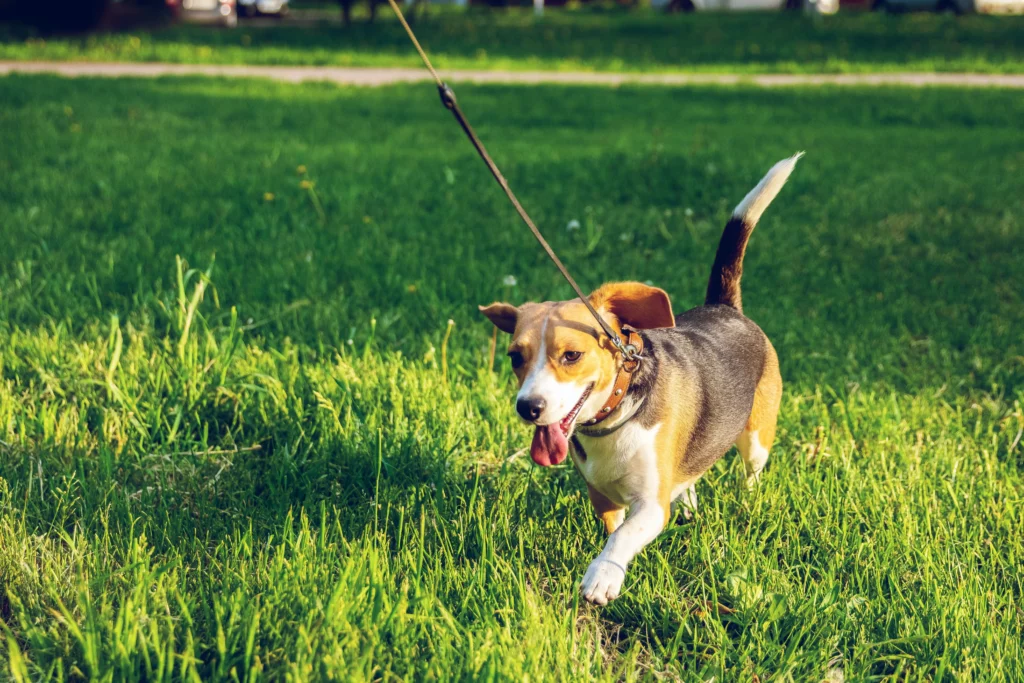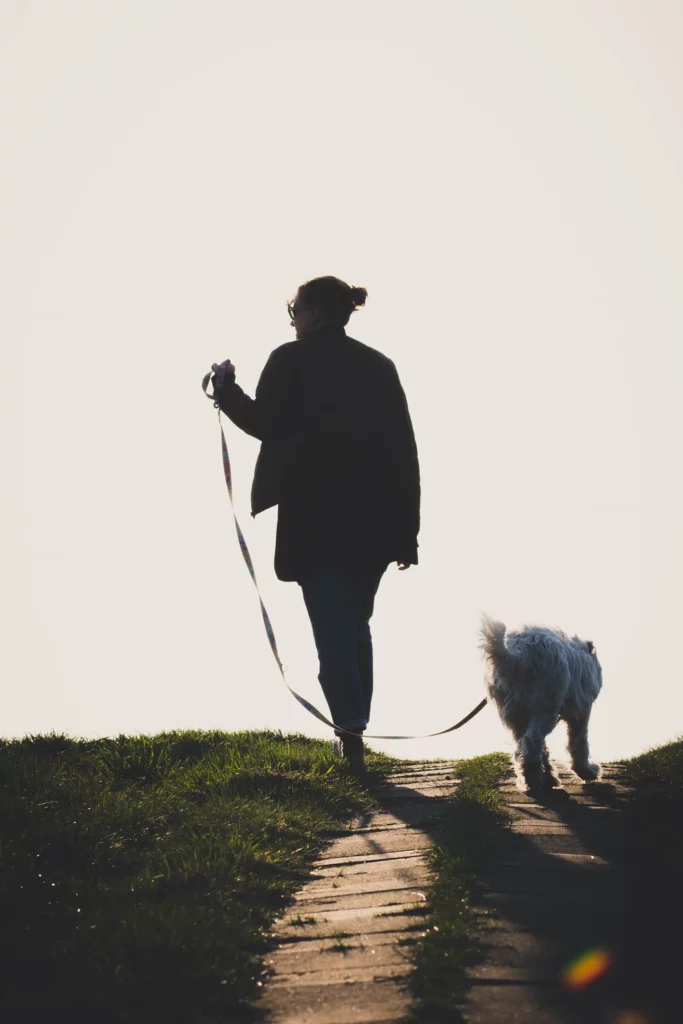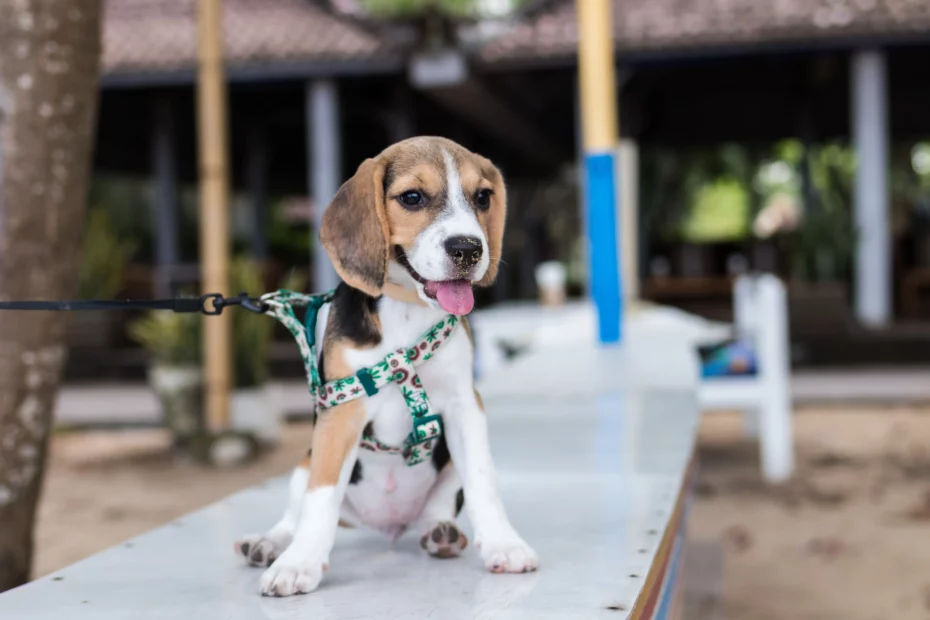The best way to leash train your dog – without stress!
If you want to train your dog to stay on a leash like a pro, you’ll need to keep your dog’s energy level in mind, as a dog that’s too excited or energetic may have a harder time staying on a leash. On how to lease train a dog, you need to:
- Choose the right leash for your dog. A leash that’s too long or too short can make it difficult for your dog to stay on a leash. If you’re not sure what length leash to use, ask your veterinarian or a professional dog trainer.
- Be consistent with your commands. When you tell your dog to stay on a leash, make sure that you use the same command every time. This will help your dog understand what you want him to do.
- Reward your dog for staying on a leash. When your dog stays on a leash, give him a treat or praise him verbally. This will help him understand that he’s doing what you want him to do.
- Keep your dog’s energy level in mind. A dog that’s too excited or energetic may have a harder time staying on a leash. If you’re having trouble getting your dog to stay on a leash, try walking him in a less stimulating environment, such as a quiet park.
Train your dog to stay on a leash first by practicing in your own yard or house. Once your dog is comfortable staying on a leash in these environments, you can begin to take him for walks around the neighborhood. Be sure to keep your dog on a leash at all times during these walks, and only let him off the leash in areas where it’s safe for him to run around freely.
Teach your puppy how to walk on a leash in just a few easy steps
On how to leash train a dog, especially puppy, can be done by:
- Put a collar on your puppy, and attach the right leash.
- Start by walking around your house or yard with your puppy on a leash while keeping the leash relatively loose. When you tell your puppy to stay on a leash, make sure that you are consistent with your command. This will help your puppy understand what you want him to do. Reward your puppy for staying on a leash.
- When your puppy begins to pull on the leash, stop walking and stand still.
- When your puppy stops pulling on the leash, continue walking.
- Repeat this process until your puppy is comfortable walking on a leash without pulling.
- Once your puppy is comfortable walking on a leash, you can begin taking him for walks around the neighborhood.

When you’re first teaching your puppy to walk on a leash, it’s important to be patient and consistent. Be sure to praise your puppy when he’s walking nicely on a leash, and be sure to give him plenty of opportunities to practice. With time and patience, your puppy will learn to walk on a leash like a pro!
When to start leash training a puppy?
The best time to start leash training a puppy is when he’s between 8 and 10 weeks old. At this age, puppies are old enough to start learning basic obedience commands, and they’re also old enough to start learning how to walk on a leash. If you start leash training your puppy before he’s 8 weeks old, he may be too young to understand what you’re trying to teach him. If you start leash training your puppy after he’s 10 weeks old, he may be too old to learn how to walk on a leash.
You’re ready to test your puppy on a leash outdoor
There will be new challenges with this step. Dogs love to sniff and explore new environments, so don’t be surprised if your pup spends a lot of time sniffing around during your walks.
Be patient with your puppy, and praise him when he’s behaving well on the leash. If your puppy starts to pull on the leash or wander off the path, gently correct him with a tug on the leash. Never jerk the leash or yell at your puppy, as this will only make the problem worse.
Reward your puppy with treats and praise when he’s walking calmly on the leash. As your puppy gets more comfortable with walking on a leash, you can begin to introduce him to other environments, such as the park or the beach. If your puppy is well-behaved on a leash, you can eventually let him off the leash in these areas. Just be sure to keep a close eye on your puppy, and be prepared to put him back on the leash if he starts to wander off.
What are the loose leash walking techniques?
There are many loose leash walking techniques, but the most common and effective ones are:
- The “heel” position – this is where your dog walks by your side, with the leash slack.
- The “loose leash” position – this is where your dog is allowed to walk in front of you, with the leash slack.
- The “follow” position – this is where your dog follows behind you, with the leash slack.
- The “free” position – this is where your dog is allowed to roam freely, without a leash.

Loose leash walking games
There are a number of fun games you can play to help your dog learn loose leash walking. One game is called “follow the leader.” Start by walking in front of your dog on a loose leash, and have your dog follow you. Every time your dog walks nicely by your side, give him or her a treat. Another game is called “red light, green light.” Start by walking with your dog on a loose leash. Every time your dog pulls ahead of you, stop and wait until he or she comes back to your side. Once your dog is back by your side, continue walking. These games are a great way to teach your dog how to walk on a loose leash while also having fun!
Extra notes
The easiest way to teach your dog loose leash walking is to start with basic obedience commands such as sit, stay, come, and down. Once your dog has mastered these commands, you can begin to work on loose leash walking. Start by walking your dog on a short leash, and gradually increase the length of the leash as your dog gets better at walking without pulling. Be sure to praise your dog and give treats when he or she is walking nicely on a loose leash.
It’s a good idea to have a dog on a lead when you are out walking. This is so that you can keep the dog under control and stop it running away. If you are out with your dog and it is not on a lead, you could be fined.
There are some dogs which are not allowed to be off the lead. These are called ‘dangerous dogs’ and include:
It is also illegal to own one of these dogs in the UK. If a police officer sees one of these dogs off the lead, they can put it on a lead. They can also take it away from the owner.
